A day in the life of a UX researcher
Sarah Lee
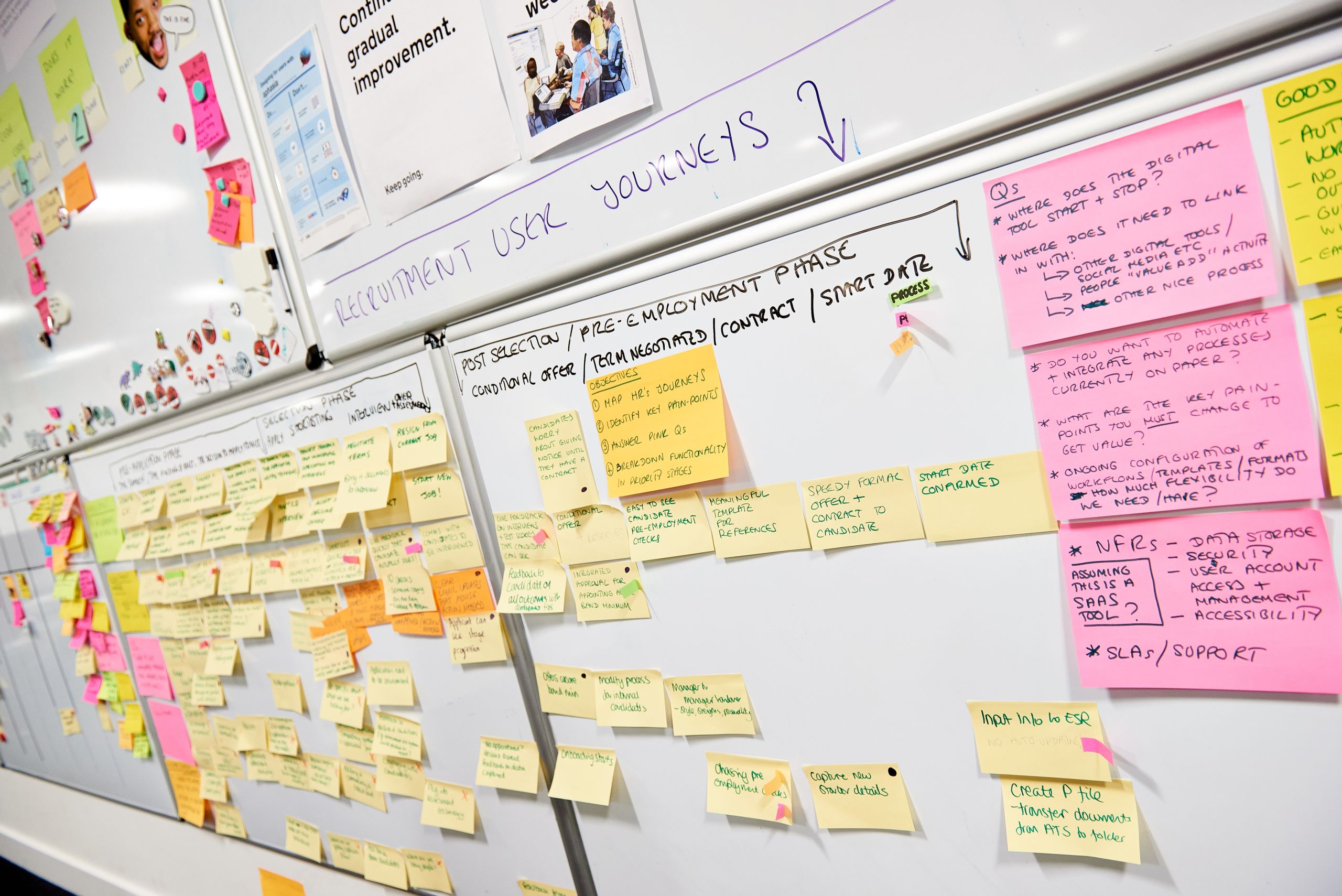
Sarah Lee joined the product development team in the Digital, Information and Technology Directorate in the first week of 2021. Here, she talks us through a typical day for a user experience (UX) researcher at NICE.
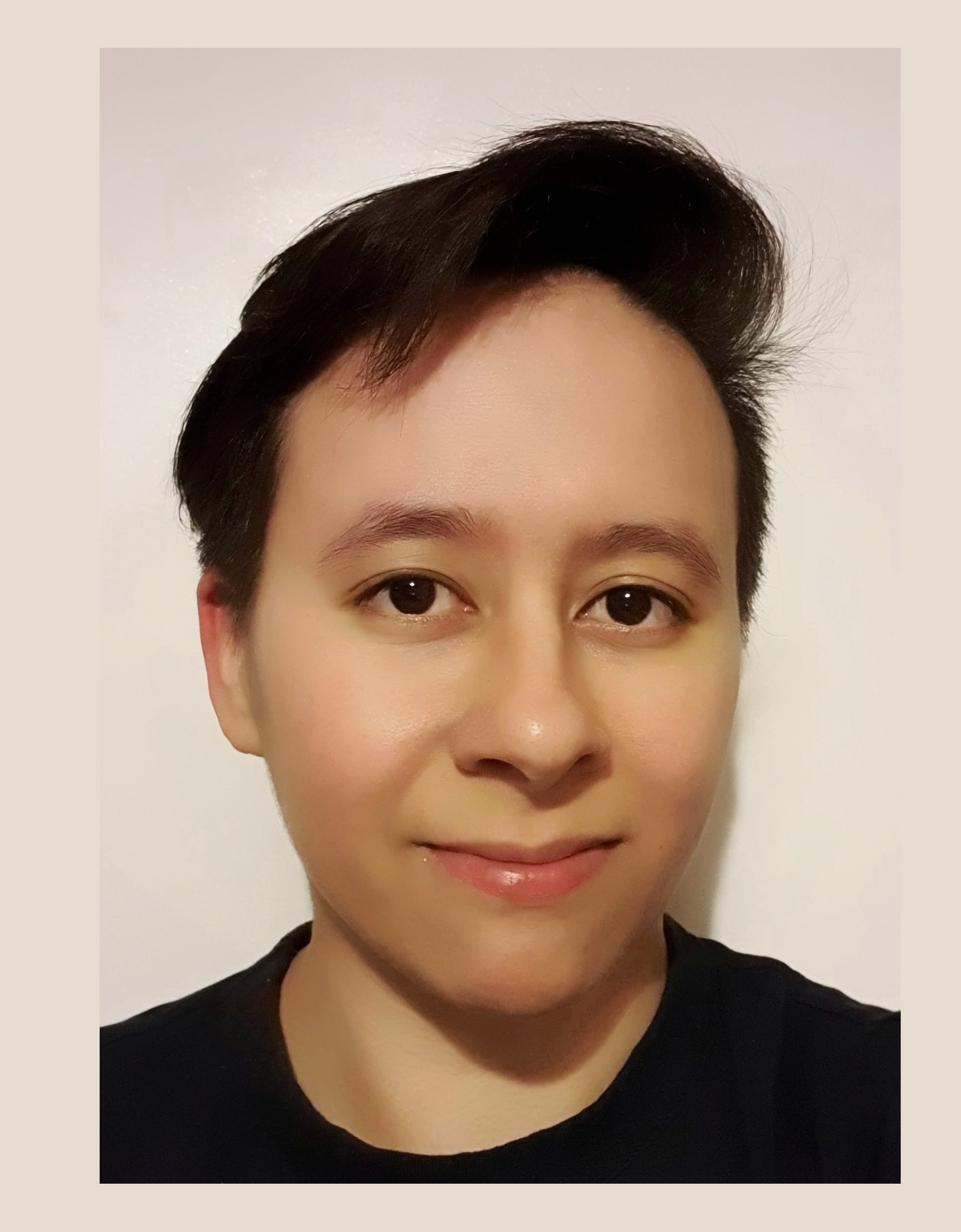
Sarah tells us all about what a normal day for her looks like

Sarah tells us all about what a normal day for her looks like
Sarah tells us all about what a normal day for her looks like
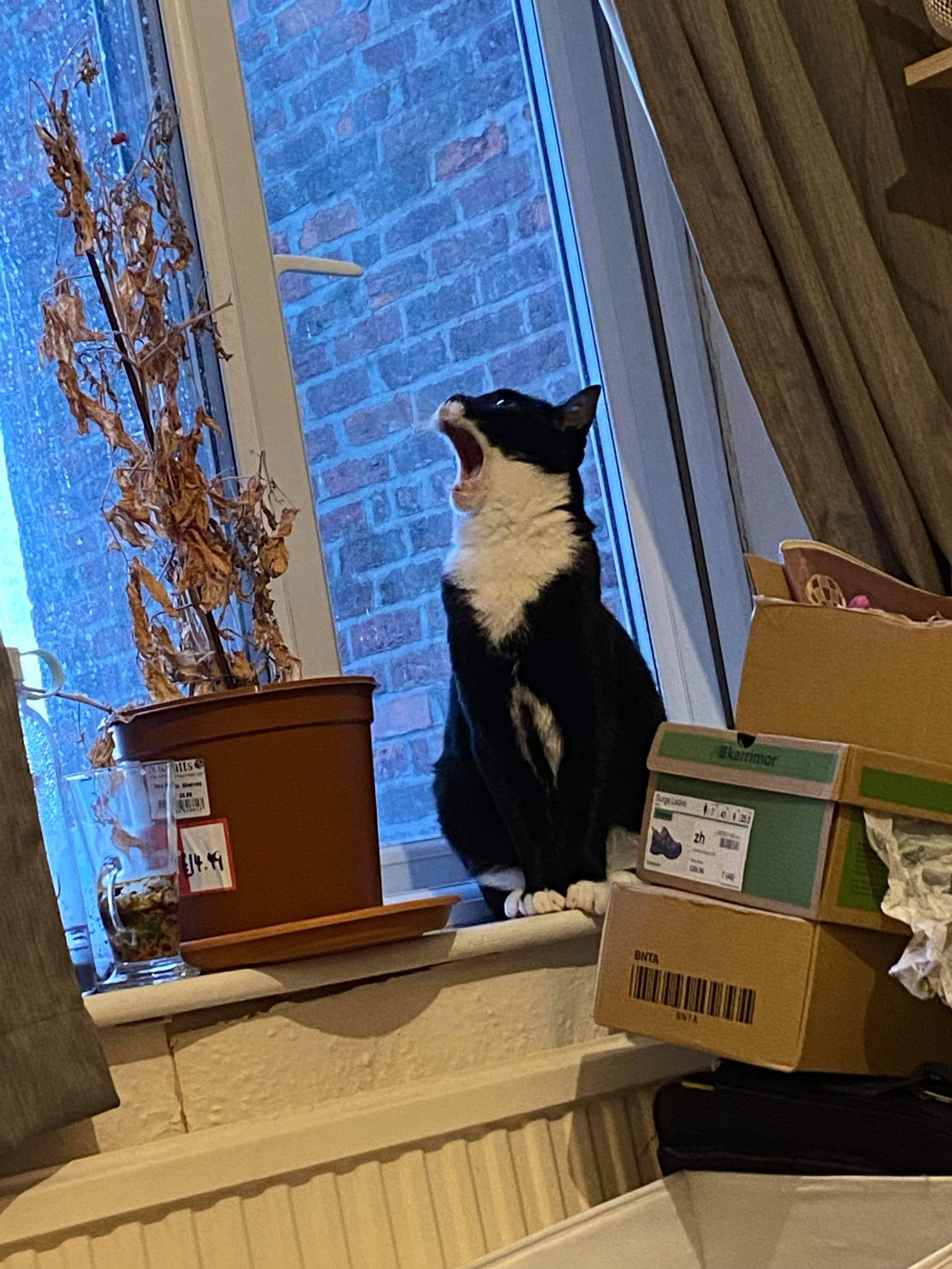
Stu the cat, in full song
Stu the cat, in full song
6am
I get woken up by my housemate’s cat, Stuart (Stu, to his friends). If my housemate is away, Stu will just sit and yell outside my room until I get up and feed him. So, I have no need for an alarm anymore! Sometimes, after I’ve fed him, I must confess, I do just go back to sleep. But, if I’m feeling productive, I’ll have my breakfast, then spend some time meditating or maybe doing some exercise.

Stu the cat, in full song
9am
I login to my works laptop and quickly check my emails.
9:15am
I’m working on the integrated guidance project. So, my first meeting of the day is a stand up with the integrated guidance team to plan out what we’re doing.
If you’re new to the integrated guidance project, it’s basically about looking at all the guidance NICE has on the same topics. We then think about how to bring it all together in a logical, more accessible and user friendly way on our website. We’re just looking at one topic at the moment – diabetes. We have lots of content on the NICE website about diabetes. It’s on different pages, scattered across the site, and is not always easy to find or read. So, the aim of the project is to fix that.
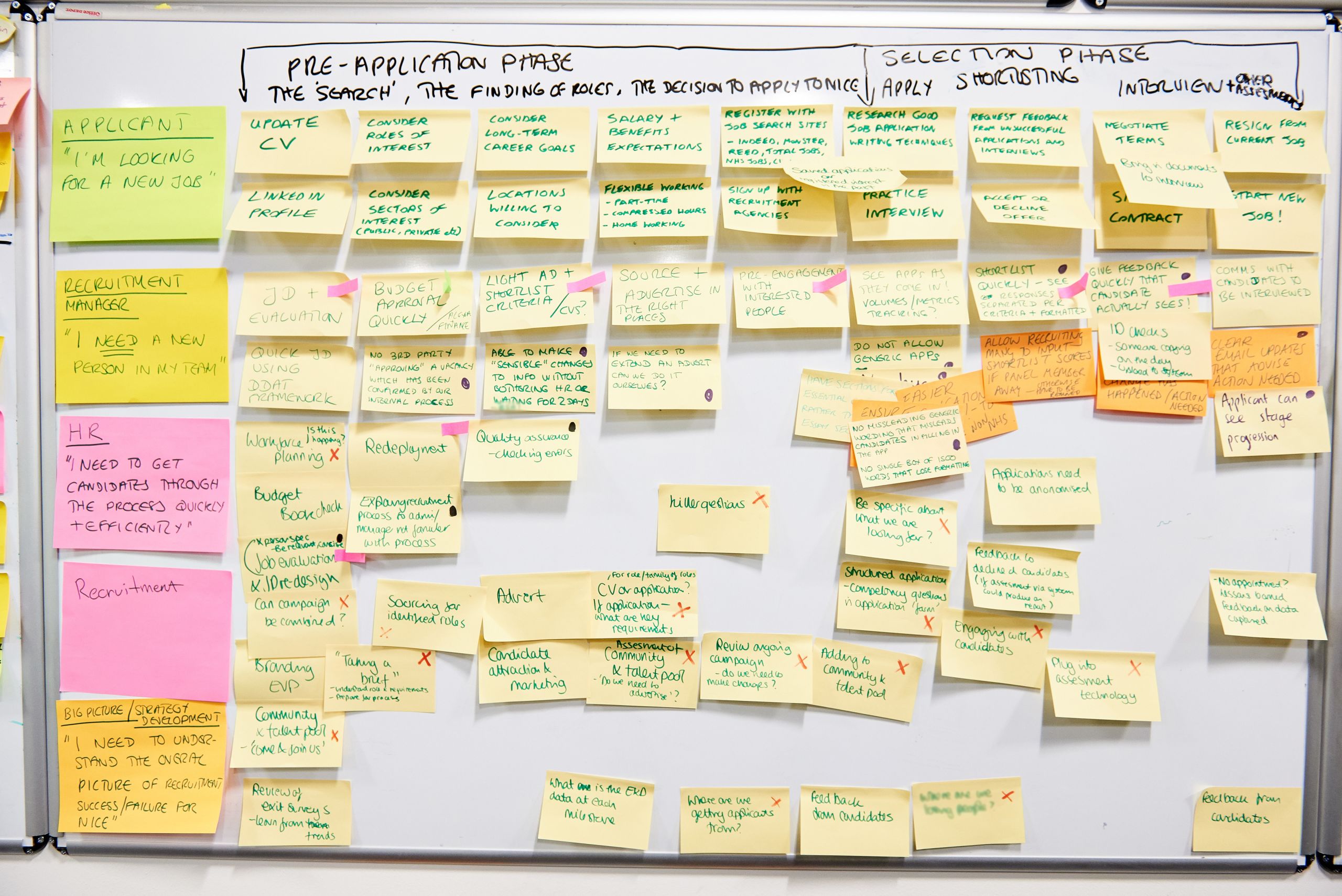
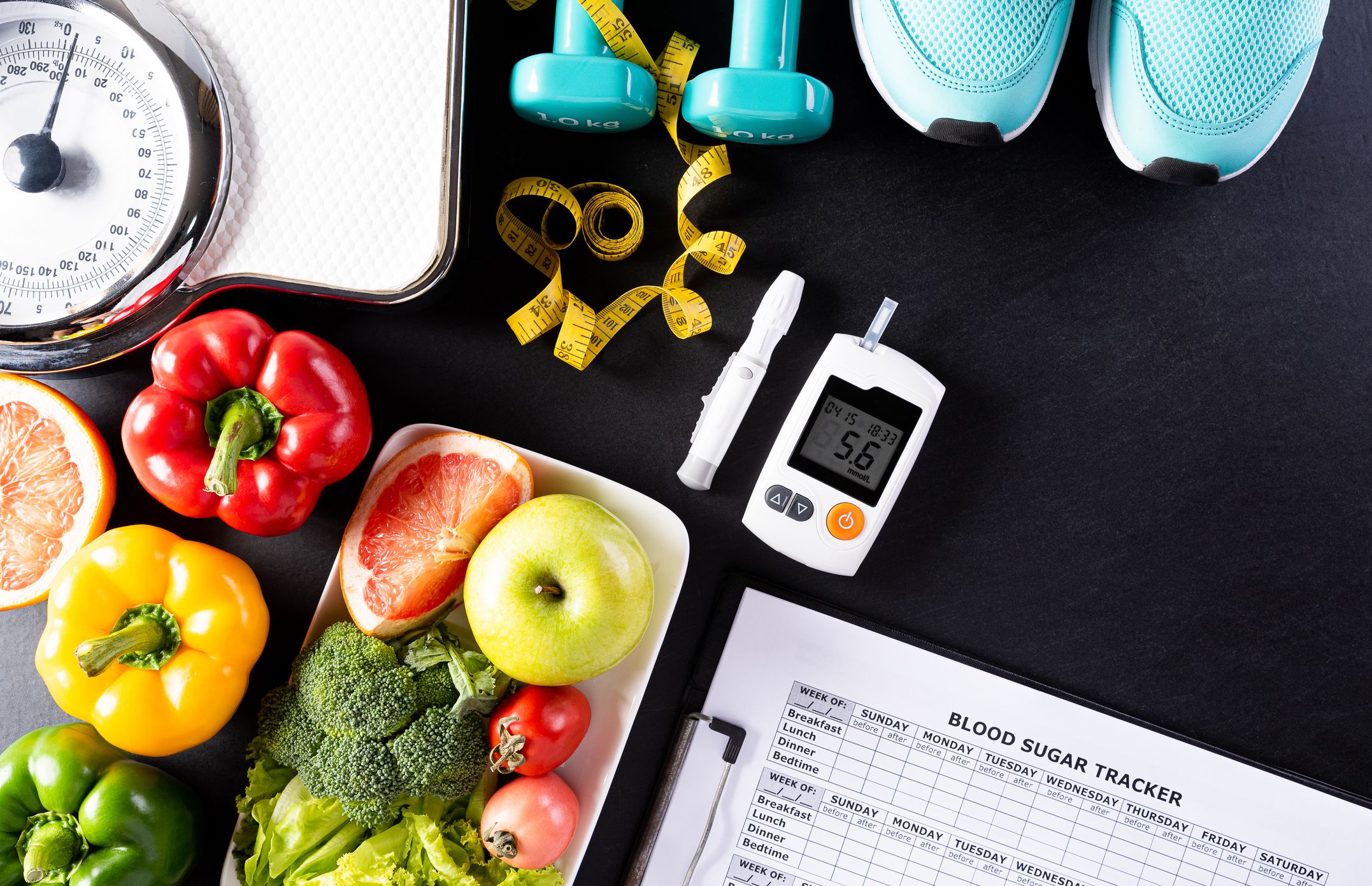
Sarah learned that medical professionals would like more support from us to help them talk about lifestyle, diet and exercise when they have consultations with patients about diabetes
Sarah learned that medical professionals would like more support from us to help them talk about lifestyle, diet and exercise when they have consultations with patients about diabetes
We’ve been working hard to capture how people access and use our diabetes guidance. And we’re using that information to build up a new design for the guidance pages of the website. I’ve been working with John Bailey, senior UX designer, and Oswin Jackson, UX designer, who have been putting together the prototype of the new design. And all 3 of us are working with the content team in the Centre for Guidelines to basically re-write and improve the content itself.
At the stand up this morning, we present some findings from the research we’ve done over the last couple of days. Everyone’s really pleased with the recent redesign we’ve done, which is great. There’s some feedback around how we can give more examples for medical professionals to help them in their consultations with patients about diabetes. In particular, helping them have conversations about lifestyle, diet and exercise. Another regular topic of conversation at these stand ups is how we can find people to take part in the next stage of user research.

Sarah learned that medical professionals would like more support from us to help them talk about lifestyle, diet and exercise when they have consultations with patients about diabetes
10am
I get started on analysing the latest lot of user research I’ve done for the project. This generally means looking through Miro boards, excel spreadsheets, theming post-its, or setting up something we can use in a future workshop. Earlier this week, we did a prioritisation session, as the team were not quite sure what to start working on first. So, I ran a Miro board session. Everyone put a suggestion on the board and we had an hour to talk them all through and for everyone to place a vote on the suggestion that was most important to them. We also looked at how we could show related external content on our prototype. We looked at examples from the NHS website and from Diabetes UK and got the team’s views on doing this.
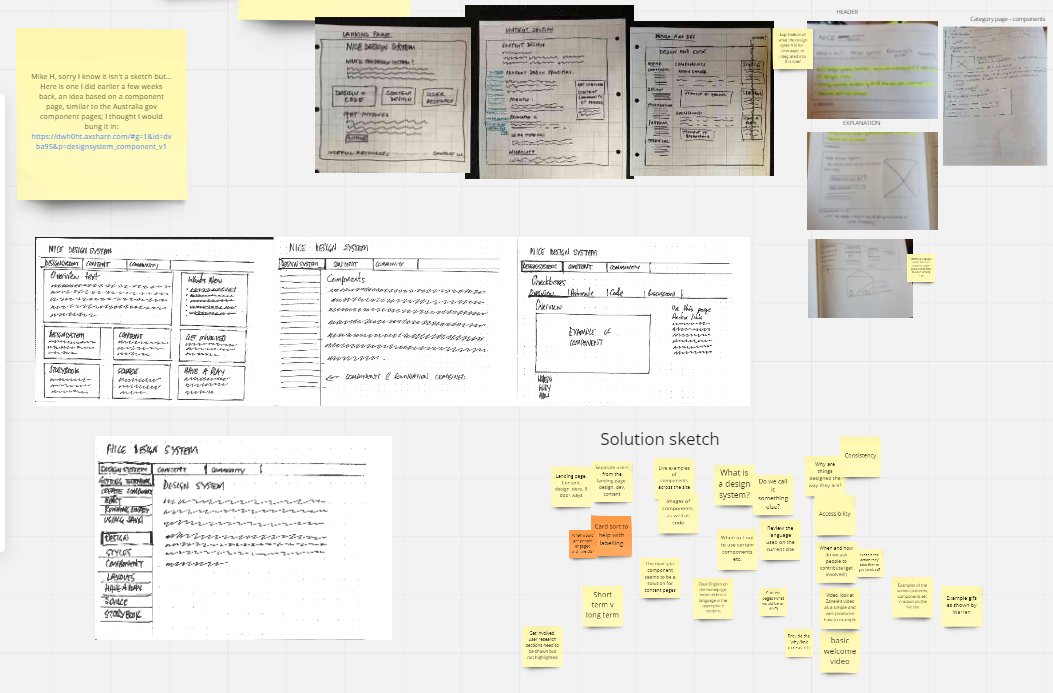
As part of her role, Sarah makes a lot of use of Miro, a virtual whiteboard
11am
We have a show and tell at least once every 2 weeks. That’s just a session where anyone at NICE can come along and find out what’s been happening with the project. Our next session will feature us talking about the research we’ve done. So, I’m excited about this one and use this time for planning what I’ll talk about.

As part of her role, Sarah makes a lot of use of Miro, a virtual whiteboard
As part of her role, Sarah makes a lot of use of Miro, a virtual whiteboard
12pm
12pm. I think I’ve actually conditioned myself to need my lunch at this time – by 11:55am, I’m always crazy hungry! I always have about an hour for lunch. And I always try to go outside, or at least out of my room, even if it’s just to cook something. Just to get a bit of a break from my laptop. There’s a park near me. So, I’ll sometimes have a walk around there for a bit to get some fresh air and exercise.
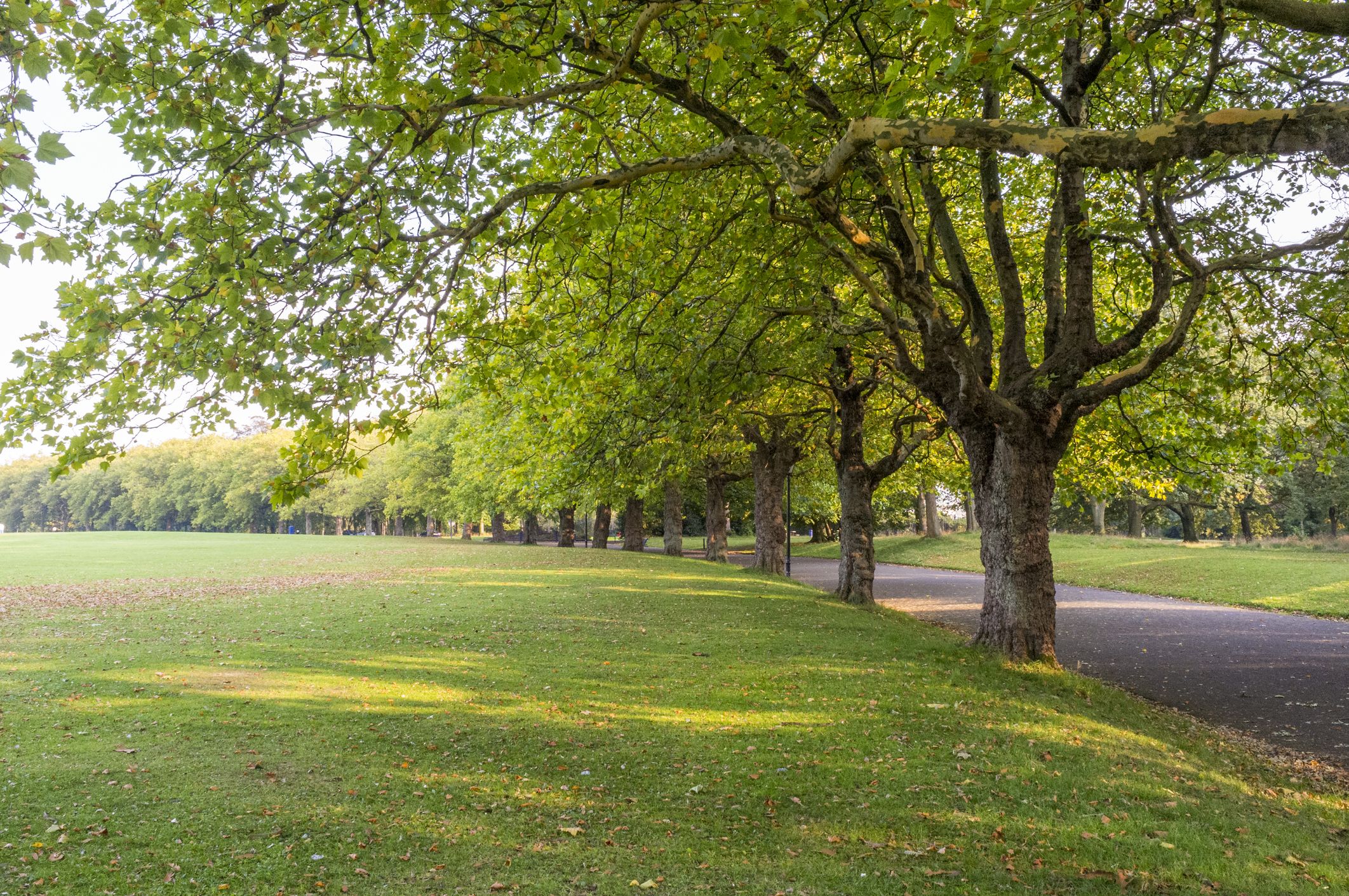
1pm
I have a user research session booked in. In these sessions, I take participants through different aspects of our current prototype. The sessions last about an hour each, and usually involve just one user per session, with me leading and another colleague taking notes. This time round, we’ve run 7 sessions, divided up between different members of the team. I find them really interesting.
It’s so important that we regularly test our designs with people connected to diabetes care. We’ve worked with GPs, patients, policy makers, even heads of medicines management. These sessions help us find out how people would use the newly designed content in their daily life, or in their job. We want to make sure we’re creating something that’s usable for everyone. In the past, NICE has not been particularly user focused in this way, particularly with our website. So, it’s great that we’re now adopting this new approach.
Virtual working has made recruiting to these sessions much easier. It’s so much easier to get time in people’s diaries, and to get a wider selection of users from different backgrounds from across the country. This is really helpful during the pandemic when so many health and care professionals are working such tight hours and trying to fit us in around that.
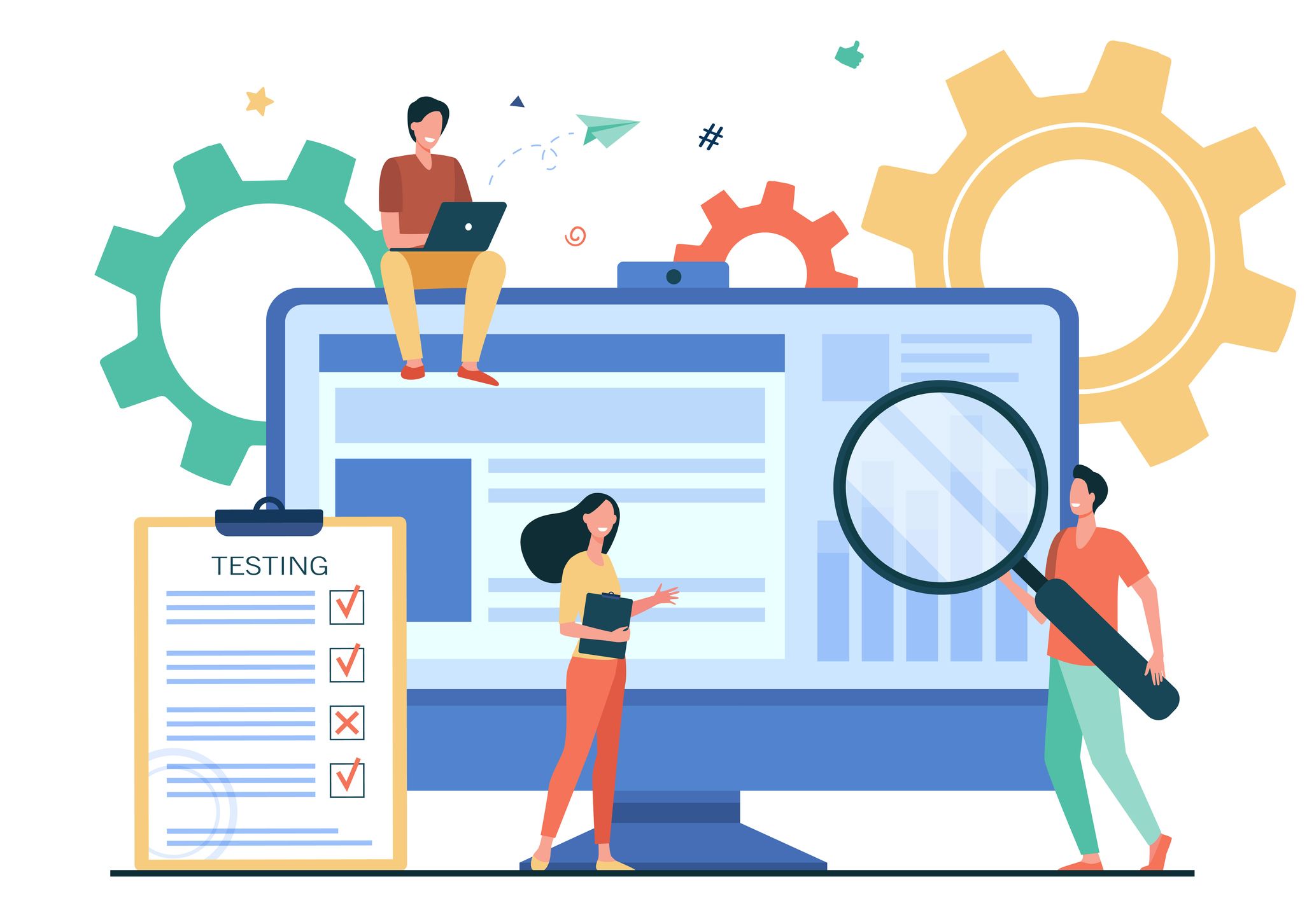
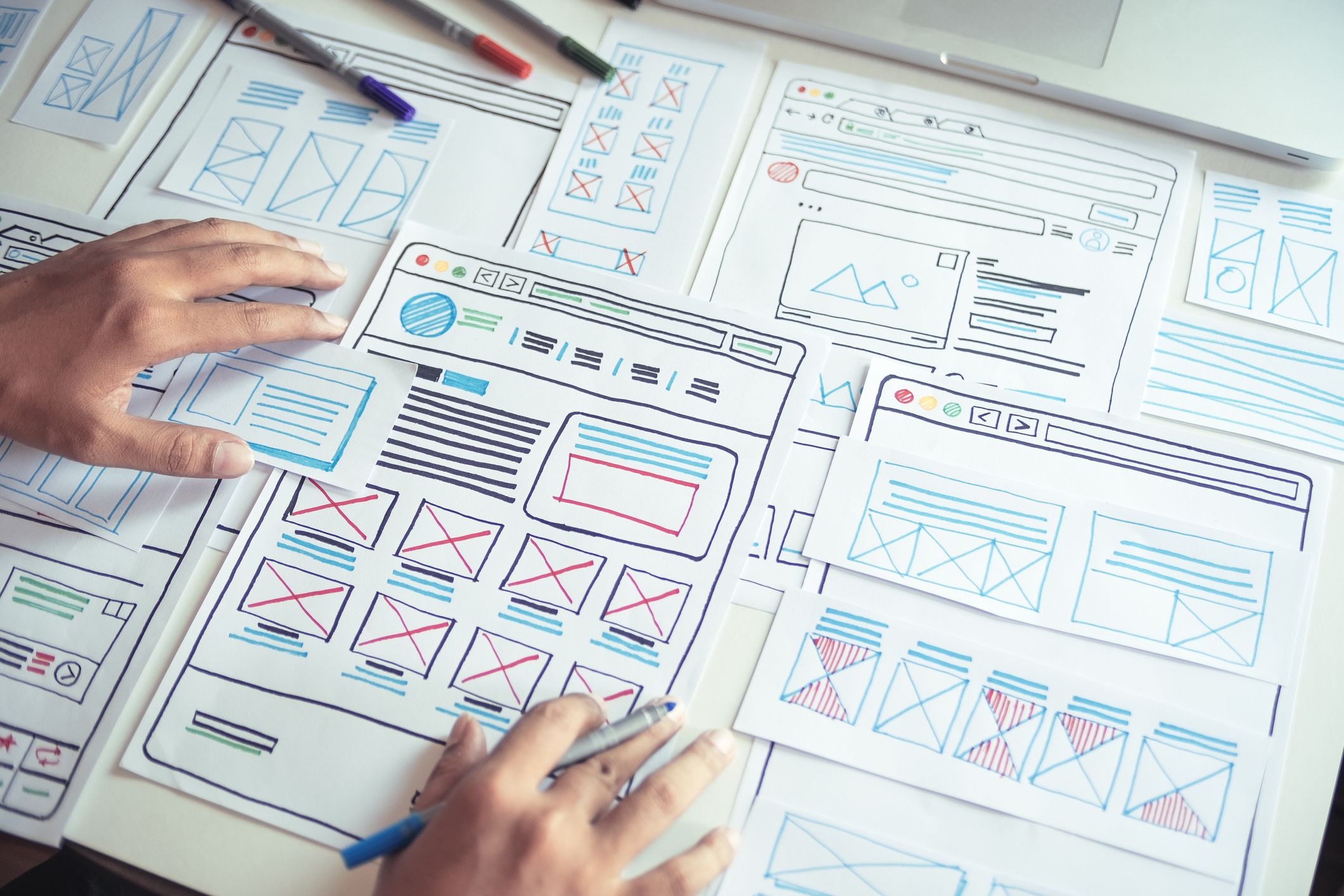
Sarah and the team have been looking at how they can show related external content on their prototype
Sarah and the team have been looking at how they can show related external content on their prototype
2pm
I usually do not have too many meetings in the afternoon. So, this is when I can really get on with some more analysis. This is also generally when I’ll try to finish things I did not get a chance to finish in the morning, particularly if I had a lot of meetings!
4pm
We run a sketching workshop with John and Oswin, our design leads. We start with a problem that came up from the research and the team draws ways of getting around that problem with the design. Then the design leads take those drawings away and actually make it into a design. It’s a really good session and we come up with some great solutions. We also look at examples of how related content is displayed on other websites, like BBC news or Wikipedia. It's a great way to brainstorm

Sarah and the team have been looking at how they can show related external content on their prototype
5pm
I usually log off at this time.
6pm onwards
In the evenings, I spend a lot of time with my housemates. I share a house with 3 other girls, and Stu the cat, of course! Tonight, we’re going to order in a cheeky Nandos and watch a film - a fairly typical night for us! We’ll be watching ‘Eurovision’ tonight – it’s a great film, we’re obsessed with it!
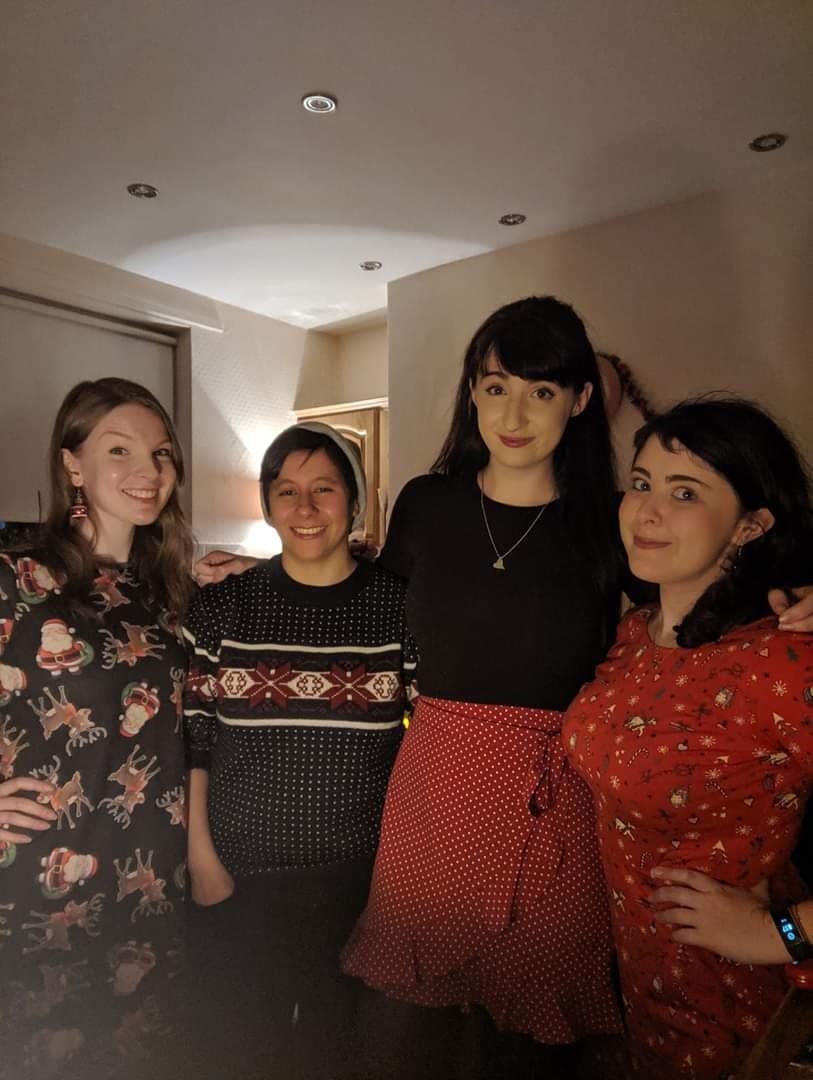
Sarah and her housemates
I’m also part of a ‘mental fitness’ Discord, which I moderate, mostly in the evenings. You may not have not heard of Discord. It was originally an online platform mostly for games, but now it hosts lots of chatrooms for different communities. It was originally created by the mental health coach/writer Mark Freeman. You can find out more about Mark on YouTube.
My group are a cool bunch of people who are working on improving their mental health and sharing their successes (and failures) the same way people do with their physical health. It’s a very positive space. So, I might spend some of the evening playing games with people on that server, answering questions and sharing my experiences. Or sending pictures of Stu!

Sarah and her housemates
Sarah and her housemates
Enjoy this article?
Get in touch and let us know.